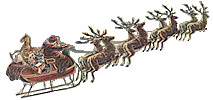PAGE 52
defilement of idolatry or spiritual adultery. By the prediction, then, in the seventh chapter, an assurance was given, that the
Lord would have a faithful people in the worst of times. Although the world might hate them, and antichrist attempt to
wear out the saints of the Most High, yet there should be a number, not always exactly the same, but always during that
state of the Church, comparatively few, who would cleave to the Lord, and the upright before him. They were the SEALED
of God, and would therefore escape the superstition and pollution of the times. They were written in the Book of Life of the Lamb, and they were
excepted from the number of those who worshipped the Beast. They were the elect of God, and it would be impossible
to deceive them to their final destruction.
Look now at the first vision in the fourteenth chapter. We have here the same number of the sealed, the same character, & under
the same symbolical name with those in the seventh chapter; which renders it evident that the same identical people are
intended, with this difference only, that here they appear openly as a Church. They are, therefore, represented as standing
upon mount Zion, the symbol of the Church, with their once crucified Savior at their head; and there they sing. They
sing the very song which believers had sung in secret so many ages. They anticipate the very song which the Church will
sing when her sufferings are ended. But yet their song is known only to themselves; which proves it refers to a time
wherein the Church is still circumscribed and unacknowledged by the world - that she is not yet fully emancipated from the wilderness.
To what can this refer, but to that which was accomplished at the Reformation? Nothing ever happened before that period,
which corresponds with this vision; but what was then effected, completely answers to the hieroglyphics and literal explanation.
Then the sealed of the Lord were brought to public view. Then the faithfulness of God to his promise in preserving such a people, appeared.
Then the blessed Jesus vindicated his cause, honored his Gospel, and showed himself to be the Savior of his Zion. Then antichrist began to consume
before the word of the Lord, the spirit of his mouth; and a pledge was given that the Church would be safely preserved during the
remaining space of her wilderness state.
We may undoubtedly expect that so great an event as the Reformation would be somewhat specifically foretold in the prophecies.
Lesser concerns are declared; and would not the Lord notify a blessing, a change in their condition of such a magnitude
to his faithful people, who were waiting for the consolation of Israel? But unless this vision refers to it, where is
|
PAGE 53
the prediction which expressly notifies that event? In general terms, it is, indeed, throughout all the prophecies, sufficiently
ascertained that the Church shall be safely protected and finally victorious. But no where, excepting in this vision, is she
exhibited in the dignified attitude and singular character, by which she was particularly distinguished at the Reformation.
By what marks or rules of exposition is it possible to determine the meaning of a symbolical prophecy more satisfactorily
than by those before us? The vision, which is distinct and complete, evidently refers to a particular object, and from the sublimity and
striking hieroglyphics here introduced, must indicate something great and interesting. It contradicts all regard to order
and propriety, to crowd unnecessarily the accomplishement of a number of prophecies respecting distinct events into one
short period of time. There is no necessity, therefore, to look forward to the commencement of the Millennium for the
fulfilment of this prediction, as some commentators have done. It is already fulfilled. What happened in the beginning of the sixteenth
century was the specific event here foretold. It will, indeed, be again and again accomplished at every great
display of the Church, as the advances in her prosperity; but the Reformation was the first and particular period intended
in this prophecy.
F.
The Fall of Babylon.
AS in every age there have been, so at this day there are, many worthy characters in the communion of the papal hierarchy,
who abhor the practices which have dishonored that power, and are eminent for their talents and virtues. Such
distinguished individuals must not be offended, when the declarations of scripture are faithfully explained, and compared
with facts which cannot be denied.
The prophecies are numerous which announce the rise and exploits of a pernicious adversary, who would introduce a form instead
of the power of religion, blend the worship of God with temporal interests, and attempt to change the kingdom of
Jesus Christ into a kingdom of this world. The adversary is described by so many marks, that it is impossible to mistake
him. A picture delineating every feature, and exhibiting in various lights a striking likeness, determines with greater
precision who is intended than could be done by even naming him. The name might be disputed as symbolical, but the portrait can
admit of no question.
|


![]() Copyright © 2013, InterMedia Enterprises
Copyright © 2013, InterMedia Enterprises